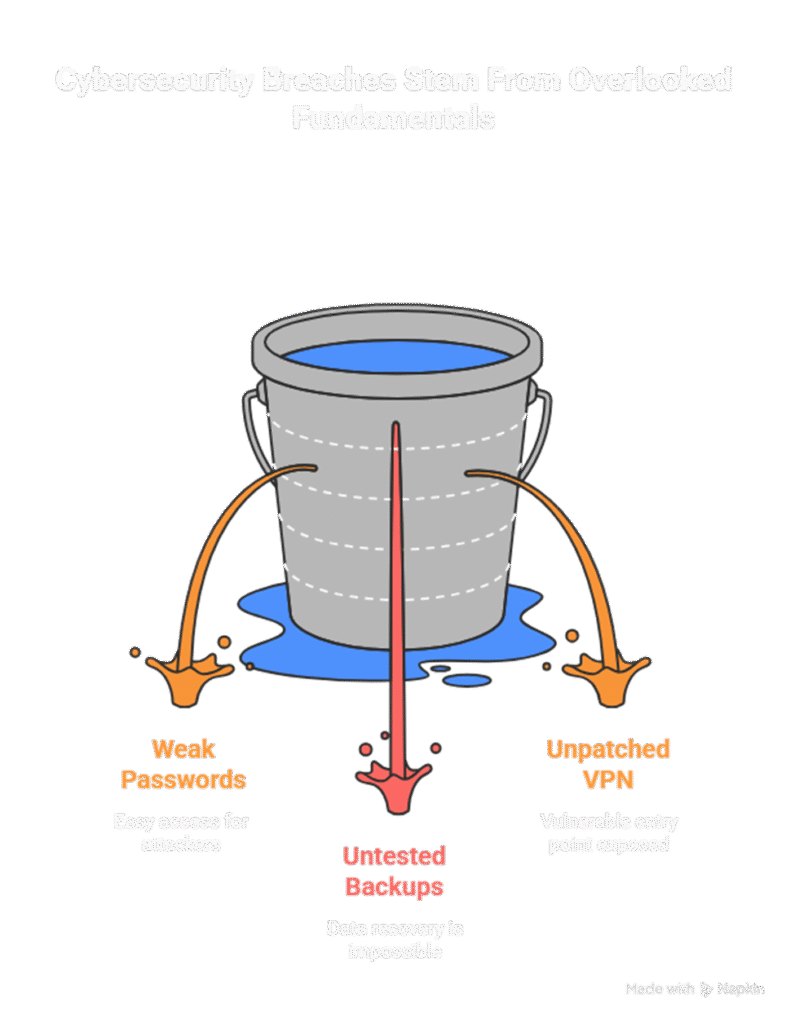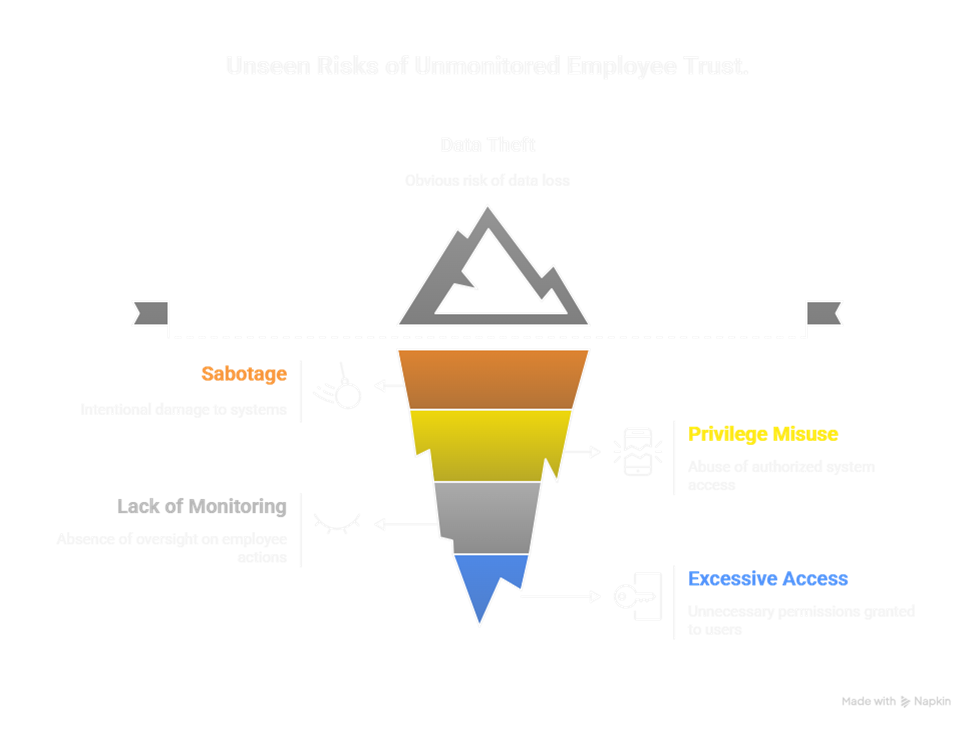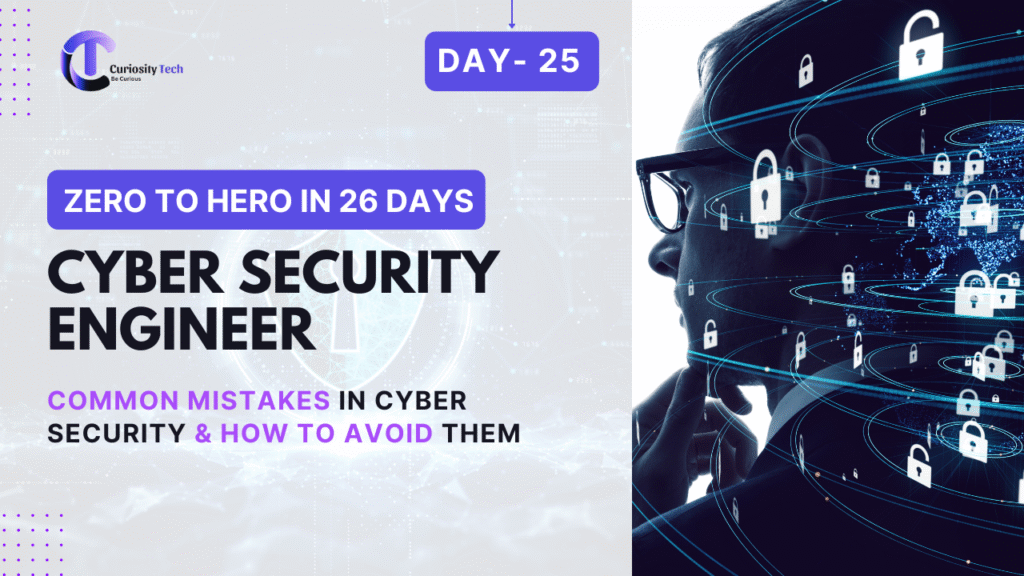Introduction (Story Format)
A few years ago, I was called into a mid-size startup after their servers were encrypted by ransomware. They had a firewall, antivirus, and even a part-time IT consultant — yet the breach happened because of basic, avoidable mistakes: weak passwords, no backups tested, and an unpatched VPN appliance. The lesson was clear — cyber security failures often stem not from sophisticated nation-state attacks, but from overlooked fundamentals.
This blog is a detailed playbook on the most common mistakes in cyber security and practical ways to avoid them. I’ve structured it differently than the last post: instead of a roadmap, here you’ll find a mistake → risk → real-world example → prevention strategy format, plus checklists, tools, and CuriosityTech insights.

1. Weak Passwords & Poor Authentication Practices
Mistake: Using short, predictable, or reused passwords.
Risk: Brute-force, credential stuffing, and phishing success.
Example: The Colonial Pipeline attack was triggered by a single compromised VPN password.
Prevention Strategies:
- Enforce MFA (Multi-Factor Authentication) across all accounts.
- Use a password manager (Bitwarden, 1Password, KeePassXC).
- Adopt passphrases instead of short complex passwords.
Checklist:
- Passwords are 14+ characters
- MFA is enabled
- No password reuse
CuriosityTech Tip: In our SOC simulation labs, 60% of breaches by students succeed because the “victim” VM had weak default passwords. We enforce a “12+12 rule” — 12 characters minimum + MFA every login.
2. Ignoring Patches & Updates
Mistake: Delaying OS, firmware, or app updates.
Risk: Exploitation of known CVEs (Common Vulnerabilities & Exposures).
Example: Equifax 2017 breach — Apache Struts vulnerability went unpatched → 147M records leaked.
Prevention Strategies:
- Automate patch management (WSUS, Intune, Ansible).
- Subscribe to vendor advisories (Microsoft, Cisco, VMware, etc.).
- Apply a “critical patch SLA”: within 72 hours for internet-facing systems.
Checklist:
- Automatic updates enabled where possible
- Monthly patch review meeting
- Vulnerability scans scheduled
3. Misconfigured Cloud Services
Mistake: Leaving S3 buckets public, wrong IAM roles, or missing security groups.
Risk: Data leaks, privilege escalation, compliance violations.
Example: Capital One AWS misconfiguration led to data theft from 100M+ accounts.
Prevention Strategies:
- Implement least privilege IAM policies.
- Use CSPM tools (Prisma, Wiz, Checkov) for continuous scanning.
- Enable encryption at rest & in transit.
Checklist:
- Cloud audit logs enabled (CloudTrail, Stackdriver, Azure Monitor)
- Default deny-all policy, exceptions explicitly granted
- Data buckets tested with aws s3 ls under unauthorized role
4. Lack of Incident Response (IR) Planning
Mistake: No clear process when an incident happens.
Risk: Slow detection, poor containment, higher damage.
Example: Target 2013 breach → alerts were ignored due to no proper IR workflow.
Prevention Strategies:
- Create a formal IR playbook (Preparation, Detection, Containment, Eradication, Recovery, Lessons Learned).
- Assign incident handlers and escalation paths.
- Run tabletop exercises quarterly.
Checklist:
- IR plan exists and reviewed annually
- Roles assigned with backup contacts
- Logs centralized for detection
5. Overlooking Insider Threats
Mistake: Trusting employees without monitoring.
Risk: Data theft, sabotage, privilege misuse.
Example: Edward Snowden (NSA) leak — insider with excessive access.
Prevention Strategies:
- Implement role-based access control (RBAC).
- Monitor privileged accounts with UEBA (User and Entity Behavior Analytics).
- Enforce mandatory vacations — irregularities surface during absence.
Checklist:
- RBAC implemented
- High-privilege accounts monitored
- HR + IT joint reviews of employee exits

6. Neglecting Backup & Recovery Testing
Mistake: Assuming backups work without testing restores.
Risk: Ransomware wipes both production and backups.
Example: Maersk 2017 — backups destroyed by NotPetya → rebuild took weeks.
Prevention Strategies:
- Apply 3-2-1 backup rule: 3 copies, 2 media types, 1 offsite.
- Test restores quarterly.
- Keep immutable backups (AWS Backup Vault Lock, Veeam Hardened Repo).
Checklist:
- Backups encrypted & tested
- Recovery SLA documented
- Immutable or air-gapped copies maintained
7. Over-Reliance on Tools, Under-Investment in People
Mistake: Buying expensive SIEM/EDR but no skilled analysts.
Risk: Tools produce noise without proper tuning.
Example: Multiple breached companies had SIEMs but ignored alerts.
Prevention Strategies:
- Train SOC analysts to tune rules and respond.
- Use MITRE ATT&CK mapping for detection coverage.
- Start with small, effective tooling (Wazuh, ELK, Suricata) and scale up.
Checklist:
- Detection rules mapped to MITRE ATT&CK
- SOC playbooks documented
- Continuous analyst training budgeted
8. No Security Awareness Training
Mistake: Employees not trained on phishing, social engineering, and safe practices.
Risk: Attackers target the weakest link — humans.
Example: 90% of breaches start with phishing emails.
Prevention Strategies:
- Quarterly phishing simulations.
- Annual training modules (short, scenario-based).
- Encourage a no-blame reporting culture.
Checklist:
- Phishing simulations conducted
- LMS with bite-sized awareness content
- Reporting channel for suspicious activity
9. Shadow IT & Uncontrolled Assets
Mistake: Employees deploying apps/services without security oversight.
Risk: Data leaks, compliance issues, attack surface expansion.
Example: Unapproved SaaS file-sharing used by finance teams leaking sensitive data.
Prevention Strategies:
- Maintain an asset inventory (hardware, software, SaaS).
- Use CASB solutions for SaaS visibility.
- Block unsanctioned apps via firewall/proxy rules.
Checklist:
- Asset management tool in place
- Monthly audit of cloud/SaaS tools
- Policy defined for approved apps
10. Not Measuring Security Maturity
Mistake: No baseline or KPI tracking.
Risk: Stagnation, blind spots, poor ROI.
Example: Boards funding security without proof of improvement.
Prevention Strategies:
- Define KPIs: patch SLA compliance, incident MTTR, phishing click rate.
- Use security maturity models (CMMI, NIST CSF).
- Report metrics to leadership quarterly.
Checklist:
- Security scorecards maintained
- Trend analysis shared with leadership
- Continuous improvement cycle in place
CuriosityTech Approach (Embedded, Not Advertised)
At CuriosityTech.in (Nagpur), we coach students and professionals not just on “tools” but on mistake avoidance mindset. In our Red-Blue Labs, learners simulate these 10 mistakes deliberately (like weak passwords, public buckets, or untested backups) and then practice remediation. The result is stronger intuition and long-term memory of what not to do in cyber security.
Quick Reference Table
| Mistake | Risk | Real Case | Prevention |
| Weak passwords | Account takeover | Colonial Pipeline | MFA + password managers |
| Unpatched systems | Exploits | Equifax | Automated patch mgmt |
| Misconfigured cloud | Data leaks | Capital One | CSPM + least privilege |
| No IR plan | Chaos in breach | Target | IR playbook & drills |
| Insider threat | Data theft | Snowden | RBAC + UEBA |
| Backup not tested | Data loss | Maersk | 3-2-1 rule + immutable |
| Over-relying on tools | Missed alerts | Multiple | Analyst training |
| No awareness | Phishing | 90% breaches | Simulations + culture |
| Shadow IT | Expanded surface | Finance SaaS leaks | Asset inventory |
| No metrics | Blind spending | Many orgs | KPIs + maturity models |
Conclusion
Most cyber security disasters don’t require genius hackers — they exploit avoidable mistakes. By learning from past failures, applying prevention strategies, and following structured checklists, organizations (and individuals) can dramatically reduce their attack surface.
The golden rule: Cybersecurity is not about perfection, it’s about discipline in avoiding the obvious mistakes repeatedly exploited by attackers.

